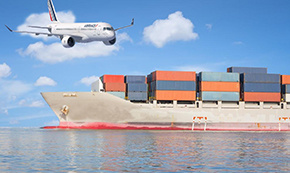All categories >
Hazardous materials? Dangerous chemicals? Let me take you to savor the details.
Categories:
News Center
News
Time of issue:
2025-11-14 16:26
Views:
Can't tell the difference between hazardous materials and hazardous chemicals?
• Hazardous Chemicals: Short for "Dangerous Chemicals," these refer to substances that, according to the "Regulations on the Safety Management of Hazardous Chemicals" (Decree No. 591 of the State Council), possess properties such as toxicity, corrosiveness, explosiveness, flammability, or combustion-promoting characteristics, posing significant risks to human health, facilities, and the environment—including highly toxic chemicals and other chemical substances. Their classification is determined by whether they are listed in the "Catalogue of Hazardous Chemicals" (2015 edition).
• Hazardous materials: This is an informal, commonly used term often referring to both hazardous goods and hazardous chemicals. According to the UN’s "Recommendations on the Transport of Dangerous Goods – Model Regulations" (TDG), hazardous goods are substances or articles that possess dangerous characteristics such as explosiveness, flammability, toxicity, infectivity, corrosiveness, or radioactivity. These materials pose significant risks—potentially causing injury, death, property damage, or environmental pollution—and thus require special precautions during transportation, storage, production, handling, use, and disposal.

• Hazardous Chemicals: The hazardous properties of dangerous chemicals are categorized into three major groups—physical hazards, health hazards, and environmental hazards—comprising a total of 29 specific items. Physical hazards include explosives, flammable gases, flammable liquids, and more; health hazards encompass acute toxicity, skin corrosion/irritation, respiratory or skin sensitization, and other related risks; while environmental hazards primarily involve contamination of aquatic ecosystems.
• Hazardous Materials: Classified into 9 major categories—namely explosives, compressed gases and liquefied gases, flammable liquids, flammable solids, oxidizers and organic peroxides, toxic substances and infectious materials, radioactive materials, corrosives, and miscellaneous hazardous goods—according to standards such as the United Nations Recommendations on the Transport of Dangerous Goods Model Regulations and the Classification and Identification of Dangerous Goods (GB 6944-2012).

• Hazardous chemicals: This category has a relatively narrow scope, primarily referring to chemicals with hazardous properties, and does not include civilian explosives, fireworks, radioactive materials, nuclear energy substances, as well as hazardous chemicals used in defense-related scientific research and production.
• Dangerous Goods: This category is broader, encompassing not only hazardous chemicals but also certain types of cargo that, while not classified as hazardous chemicals themselves, still exhibit dangerous characteristics—such as specific mechanical devices or magnetic materials.
MSDS for hazardous materials export and the certification report are both essential—so, what’s the relationship between these two documents?
An MSDS (Material Safety Data Sheet) is a chemical safety data sheet—it’s not a certification document, but simply an instruction manual. Manufacturers can prepare it themselves based on product information and relevant legal regulations. However, if they lack the necessary expertise, they can entrust a professional company to compile it on their behalf. Importantly, one MSDS corresponds to a single product, and as long as no changes occur in applicable laws or regulations—or if no new hazards associated with the product are identified—the MSDS can remain valid indefinitely.
The sea/air transport appraisal report is issued by an authoritative certification body. Typically, this involves sending a sample to the lab for professional testing, after which the report is prepared. If it’s inconvenient to send a sample, the certification body can arrange for staff to conduct the inspection at your location. The report remains valid within the current year; if it spans into the next year, a new report must be certified. January of each year usually sees the highest volume of report issuances.
END
Shenzhen Huijetong International Freight Forwarding Co., Ltd. – Professional U.S. Route Shipping Services
In the U.S.-bound shipping sector, Shenzhen Huijetong International Freight Forwarding Co., Ltd. has become a trusted choice for numerous clients, thanks to its professional services and extensive experience. Specializing in U.S.-bound transportation, Huijetong offers comprehensive logistics solutions, including sea freight, air freight, land transportation, and warehousing services. The company maintains close partnerships with major shipping alliances, enabling it to provide flexible cargo arrangements and highly efficient transportation services tailored to customer needs.
Choosing Hujiatong International Freight Forwarding Co., Ltd. means choosing professional, efficient, and reliable logistics services. For more details, please visit [Hujiatong’s official website www.szvif.com].
Choose Huijetong when you travel to the U.S.!
Shenzhen Huijietong International Freight Forwarding Co., Ltd.—your professional U.S. East Coast shipping partner.
Service Hotline: 13560787209

WeChat QR Code
Keywords:
Hazardous materials,Hazardous chemicals,Dangerous Goods Export,Dangerous Goods Transportation
Logistics Query
Quickly obtain the latest logistics information
Scan code contact
Address: 25/F Room C,Tower A, Honglong Century Plaza, No. 4002 Shennan East Road,Luo Hu District, Shenzhen, China
Zhongshan Address: Room 805, Floor 8 , Poly Plaza office Building, No. 1 Shiji East Road, Port Town, Zhongshan, Guangdong
Changsha Address: 12020, Building 2, Fudi Xingguang Tiandi, Yuhua District, Changsha .,Hunan
Indonesian company:PT VTOP LOGISTIK INTERNATIONAL
Indonesian address:Jalan Pantai Indah Barat Komplek Toho Blok A No 18 ,Kec.Penjaringan,Kel.Kamal Muara,Jakarta Utara

WeChat ID

Scan code contact









